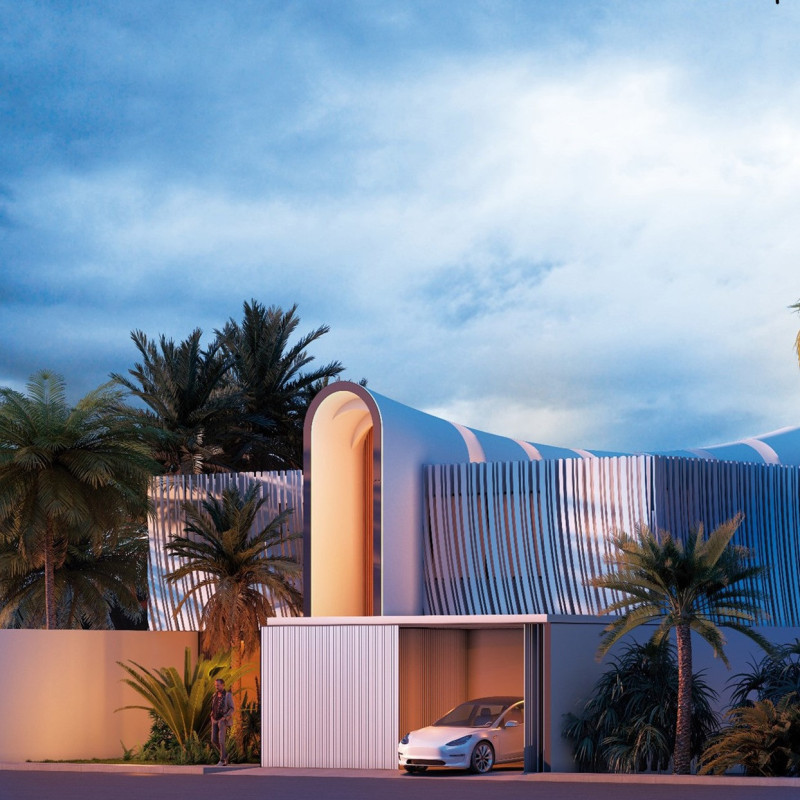5 key facts about this project
# Analytical Report on the Architectural Design Project: House of the Future Dubai
## Overview
The House of the Future Dubai, located in a prominent area of Dubai, is designed to address the pressing climatic and ecological challenges of the region while embracing contemporary habitation practices. This project embodies a commitment to sustainability and resource efficiency, showcasing innovative architectural solutions that prioritize both aesthetics and environmental responsibility.
## Spatial Dynamics and User Experience
The design employs a strategic layout that enhances both communal and private spaces within the dwelling. The ground floor features an open plan that encourages social interaction, while the upper level offers designated private areas for residents. Features such as interconnected balconies and internal gardens further facilitate a connection between indoor and outdoor environments, promoting a holistic living experience. The architectural forms within the house are purposefully crafted to optimize natural light and ventilation, contributing to an energetic yet intimate atmosphere.
## Material Selection and Sustainability
A careful choice of materials underpins the aesthetic and functional integrity of the structure. The design incorporates reinforced concrete for structural stability, Low-E glass to maximize natural illumination while minimizing energy consumption, and sustainable wood to add warmth to the interiors. Additionally, the use of eco-friendly insulation and green roof systems exemplifies the commitment to energy efficiency and biodiversity. This innovative material palette not only enhances the building's performance but also aligns with the principles of sustainable architecture, making the house a model for future residential designs in similar climates.





















































